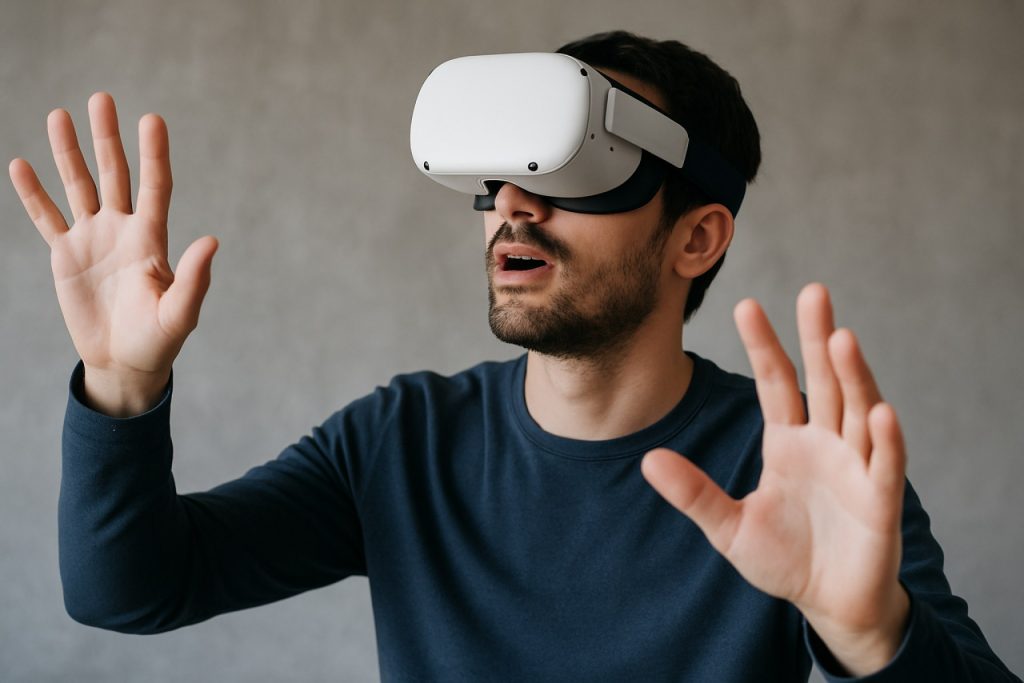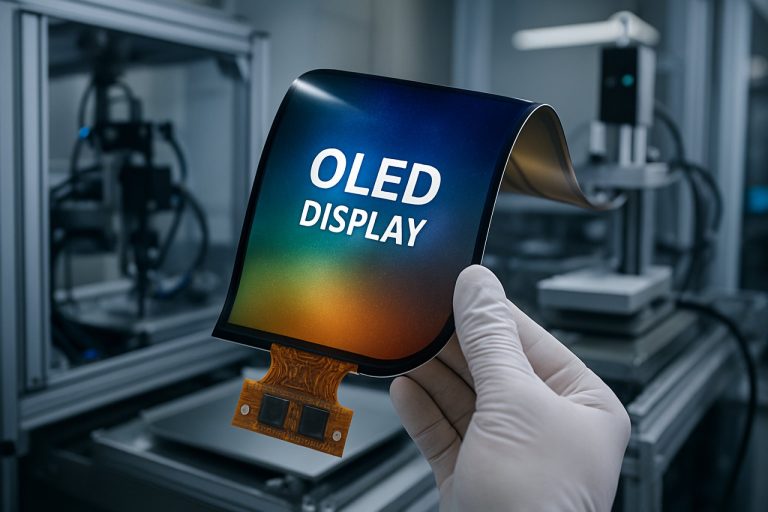
2025 Volumetric Video Compression for Immersive Virtual Reality: Market Dynamics, Technology Breakthroughs, and Strategic Forecasts. Explore Key Growth Drivers, Competitive Shifts, and Regional Opportunities Shaping the Next 5 Years.
- Executive Summary and Market Overview
- Key Technology Trends in Volumetric Video Compression for VR
- Competitive Landscape and Leading Players
- Market Growth Forecasts (2025–2030): CAGR, Revenue, and Adoption Rates
- Regional Analysis: North America, Europe, Asia-Pacific, and Emerging Markets
- Challenges, Risks, and Barriers to Adoption
- Opportunities and Strategic Recommendations
- Future Outlook: Innovations and Market Evolution
- Sources & References
Executive Summary and Market Overview
Volumetric video compression is a pivotal technology enabling the delivery of immersive virtual reality (VR) experiences by efficiently encoding and transmitting 3D spatial video data. Unlike traditional 2D or stereoscopic video, volumetric video captures dynamic scenes in three dimensions, allowing users to move freely and interact within a virtual environment. This capability is essential for next-generation VR applications in entertainment, education, healthcare, and enterprise collaboration.
The global market for volumetric video compression is poised for significant growth in 2025, driven by the rapid expansion of VR hardware adoption and the increasing demand for high-fidelity, interactive content. According to International Data Corporation (IDC), the worldwide VR headset market is expected to surpass 20 million units shipped in 2025, creating a robust ecosystem for immersive content delivery. However, the massive data requirements of volumetric video—often exceeding several gigabits per second in raw form—necessitate advanced compression algorithms to make real-time streaming and storage feasible.
Key industry players, including Microsoft (with its Mixed Reality Capture Studios), Intel, and Google, are investing heavily in volumetric capture and compression technologies. These companies are developing proprietary codecs and leveraging machine learning to optimize compression efficiency while preserving visual quality. The emergence of open standards, such as MPEG’s Video-based Point Cloud Compression (V-PCC), is also accelerating interoperability and adoption across platforms (MPEG).
Market analysts project that the volumetric video market—including capture, compression, and playback solutions—will reach a value of $5.8 billion by 2025, with compression technologies accounting for a substantial share due to their critical role in enabling scalable VR deployments (MarketsandMarkets). The entertainment sector remains the largest adopter, but enterprise training, telepresence, and medical visualization are emerging as high-growth segments.
In summary, volumetric video compression stands at the forefront of immersive VR innovation in 2025, addressing the technical challenges of bandwidth and storage while unlocking new possibilities for interactive, lifelike virtual experiences. The market is characterized by rapid technological advancements, strategic investments, and the convergence of hardware and software ecosystems to support the next wave of VR content.
Key Technology Trends in Volumetric Video Compression for VR
Volumetric video compression is a cornerstone technology enabling immersive virtual reality (VR) experiences, as it allows the capture, transmission, and rendering of dynamic 3D scenes with high fidelity and manageable bandwidth. In 2025, several key technology trends are shaping the evolution of volumetric video compression for VR, driven by the need for real-time interactivity, scalability, and device compatibility.
- AI-Driven Compression Algorithms: Machine learning and deep neural networks are increasingly being integrated into compression pipelines to optimize encoding efficiency. These AI-based methods can predict and remove redundant data more effectively than traditional codecs, resulting in higher compression ratios without significant loss of visual quality. Companies like Microsoft and Intel are actively researching neural compression techniques for volumetric content.
- Point Cloud and Mesh-Based Codecs: The industry is moving beyond conventional video codecs to specialized formats such as MPEG’s V-PCC (Video-based Point Cloud Compression) and G-PCC (Geometry-based Point Cloud Compression). These standards, developed by the Moving Picture Experts Group (MPEG), are designed to efficiently compress 3D point clouds and meshes, which are fundamental to volumetric video in VR.
- Adaptive Streaming and Progressive Transmission: To address bandwidth constraints and varying device capabilities, adaptive streaming solutions are being implemented. These allow volumetric video to be transmitted at multiple levels of detail, dynamically adjusting quality based on network conditions and user focus. Akamai and NVIDIA are among the companies developing adaptive delivery systems for immersive media.
- Edge Computing Integration: Offloading computationally intensive compression and decompression tasks to edge servers reduces latency and enables real-time volumetric streaming for VR. This trend is supported by advancements in 5G infrastructure and is being explored by firms such as Ericsson and Qualcomm.
- Interoperability and Open Standards: The push for open, interoperable standards is accelerating, with organizations like the Khronos Group and ETSI working on specifications that ensure compatibility across devices and platforms, fostering a more robust VR ecosystem.
These trends collectively address the technical challenges of delivering high-quality, interactive volumetric video in VR, paving the way for richer, more accessible immersive experiences in 2025 and beyond.
Competitive Landscape and Leading Players
The competitive landscape for volumetric video compression in immersive virtual reality (VR) is rapidly evolving, driven by the increasing demand for high-fidelity, real-time 3D content in applications such as gaming, telepresence, education, and enterprise collaboration. As of 2025, the market is characterized by a mix of established technology giants, innovative startups, and academic-industry collaborations, all vying to address the unique challenges of compressing and streaming volumetric video at scale.
Leading players in this space include Microsoft, which has invested heavily in its Mixed Reality Capture Studios and Azure cloud infrastructure to enable volumetric video workflows. Microsoft’s solutions leverage proprietary compression algorithms optimized for cloud-based processing and real-time streaming to VR headsets. Another major contender is Intel, which has developed advanced point cloud compression techniques and hardware acceleration to support volumetric video in immersive environments.
Startups such as 8i and Volograms are also making significant strides, focusing on efficient capture, compression, and delivery pipelines tailored for consumer and enterprise VR applications. 8i, for example, has developed a proprietary codec that reduces bandwidth requirements while maintaining high visual fidelity, enabling more accessible volumetric experiences on standalone VR devices. Volograms, meanwhile, specializes in mobile-friendly volumetric video, targeting social VR and AR use cases.
Industry standards are also shaping the competitive landscape. The Moving Picture Experts Group (MPEG) has introduced the MPEG-I Point Cloud Compression (PCC) standard, which is being adopted by several market participants to ensure interoperability and scalability. Companies like Qualcomm are integrating these standards into their chipsets, enabling efficient on-device decoding for next-generation VR headsets.
Strategic partnerships and acquisitions are common, as larger firms seek to integrate cutting-edge compression technologies into their platforms. For instance, Apple has reportedly acquired startups specializing in 3D video and compression, aiming to bolster its spatial computing ecosystem. The competitive landscape is expected to intensify as demand for immersive VR content grows, with innovation in compression algorithms, hardware acceleration, and cloud delivery remaining key differentiators.
Market Growth Forecasts (2025–2030): CAGR, Revenue, and Adoption Rates
The volumetric video compression market for immersive virtual reality (VR) is poised for robust growth between 2025 and 2030, driven by escalating demand for high-fidelity, interactive VR experiences across entertainment, education, healthcare, and enterprise sectors. According to projections by MarketsandMarkets, the global volumetric video market—which includes compression technologies—is expected to achieve a compound annual growth rate (CAGR) of approximately 28% during this period, with immersive VR applications representing a significant share of this expansion.
Revenue forecasts indicate that the volumetric video compression segment will surpass $2.5 billion by 2030, up from an estimated $650 million in 2025. This surge is attributed to the proliferation of VR headsets with higher resolution and frame rates, necessitating advanced compression algorithms to deliver seamless, real-time volumetric content without overwhelming bandwidth or storage capacities. The adoption of next-generation codecs, such as MPEG’s V-PCC and emerging neural compression techniques, is expected to further accelerate market growth by enabling more efficient transmission and rendering of 3D video data (Grand View Research).
Adoption rates of volumetric video compression solutions are projected to rise sharply, particularly in North America, Europe, and parts of Asia-Pacific, where VR infrastructure and content ecosystems are maturing rapidly. By 2027, it is anticipated that over 60% of new immersive VR applications will integrate volumetric video compression, compared to less than 25% in 2024 (International Data Corporation (IDC)). This trend is reinforced by strategic investments from major technology firms and content creators, who are prioritizing volumetric capture and compression to differentiate their VR offerings.
- Entertainment and gaming will remain the largest end-use segments, but healthcare (for telemedicine and surgical training) and education (for interactive learning) are expected to exhibit the fastest adoption rates.
- Cloud-based compression and streaming services are forecast to account for over 40% of market revenue by 2030, reflecting a shift toward scalable, on-demand VR content delivery.
- Regulatory and interoperability standards, such as those from the Moving Picture Experts Group (MPEG), will play a pivotal role in driving widespread adoption and ensuring cross-platform compatibility.
In summary, the period from 2025 to 2030 will see volumetric video compression emerge as a cornerstone technology for immersive VR, underpinned by rapid market growth, rising adoption rates, and continuous innovation in compression algorithms and delivery infrastructure.
Regional Analysis: North America, Europe, Asia-Pacific, and Emerging Markets
The regional landscape for volumetric video compression in immersive virtual reality (VR) is shaped by varying levels of technological maturity, investment, and adoption across North America, Europe, Asia-Pacific, and emerging markets. As of 2025, these regions demonstrate distinct trajectories in both the development and deployment of volumetric video compression technologies, driven by local industry priorities, infrastructure, and consumer demand.
- North America: North America, particularly the United States, leads in volumetric video compression innovation, propelled by robust R&D investments and a thriving ecosystem of VR content creators and technology firms. Major players such as Microsoft and Intel are advancing compression algorithms to support high-fidelity VR experiences with reduced bandwidth requirements. The region benefits from widespread 5G rollout and cloud infrastructure, enabling scalable distribution of volumetric content for entertainment, education, and enterprise applications. According to Grand View Research, North America accounted for over 35% of the global immersive VR market share in 2024, a trend expected to continue as volumetric video becomes more mainstream.
- Europe: Europe is characterized by strong regulatory frameworks and collaborative research initiatives, such as the European Telecommunications Standards Institute (ETSI)’s work on immersive media standards. Countries like Germany, France, and the UK are investing in volumetric studios and compression R&D, with a focus on interoperability and privacy. The European market is also seeing increased adoption in cultural heritage and live event streaming, leveraging advanced compression to deliver immersive experiences over existing broadband networks. IDC projects steady growth in European VR adoption, with volumetric video compression seen as a key enabler for cross-border content distribution.
- Asia-Pacific: The Asia-Pacific region is experiencing rapid growth, led by China, Japan, and South Korea. Government-backed initiatives and aggressive 5G deployment are accelerating the adoption of immersive VR and volumetric video. Companies like Sony and Huawei are investing in proprietary compression technologies to support local content ecosystems. The region’s large consumer base and mobile-first approach drive demand for efficient compression solutions that can deliver high-quality VR experiences on a range of devices. Statista reports that Asia-Pacific is set to outpace other regions in VR user growth through 2025.
- Emerging Markets: In emerging markets, adoption of volumetric video compression is nascent but growing, primarily in urban centers with improving connectivity. Initiatives by organizations such as the World Bank to expand broadband access are laying the groundwork for future immersive VR applications. Cost-effective compression solutions are critical in these regions to overcome bandwidth constraints and hardware limitations. While market penetration remains low, pilot projects in education and healthcare are demonstrating the potential of volumetric VR, with expectations for gradual uptake as infrastructure improves.
Challenges, Risks, and Barriers to Adoption
Volumetric video compression is a cornerstone technology for enabling immersive virtual reality (VR) experiences, but its adoption faces significant challenges, risks, and barriers as of 2025. The primary technical challenge lies in the sheer volume of data generated by volumetric video, which captures 3D spatial information at high resolutions and frame rates. Even with advanced codecs, such as MPEG’s V-PCC and emerging neural compression techniques, achieving real-time, high-fidelity streaming remains difficult due to bandwidth constraints and computational demands MPEG.
A major risk is the lack of standardization across the industry. Competing compression formats and proprietary solutions can lead to fragmentation, impeding interoperability between hardware and software platforms. This fragmentation increases development costs and slows ecosystem growth, as content creators and device manufacturers must support multiple standards or risk limiting their audience ETSI.
Another barrier is the high computational load required for both encoding and decoding volumetric video streams. Real-time applications, such as live VR events or interactive experiences, demand low-latency processing, which is challenging with current consumer hardware. This often necessitates expensive, high-performance GPUs or cloud-based rendering, raising costs and limiting accessibility for mainstream users NVIDIA.
Network infrastructure also poses a significant barrier. Volumetric video streams can require data rates exceeding several gigabits per second, far surpassing the capabilities of most consumer broadband connections. While 5G and fiber-optic networks are expanding, coverage remains uneven globally, restricting the potential user base for immersive VR applications International Telecommunication Union (ITU).
Content protection and privacy risks are heightened with volumetric data, as 3D captures can inadvertently record sensitive environments or biometric information. Ensuring secure transmission and storage, as well as compliance with evolving data protection regulations, adds further complexity for developers and service providers International Organization for Standardization (ISO).
Finally, the lack of compelling, high-quality volumetric content and the high costs of production equipment remain significant adoption barriers. Without a robust content ecosystem and affordable capture solutions, both consumer and enterprise uptake of volumetric VR will be slow, despite advances in compression technology International Data Corporation (IDC).
Opportunities and Strategic Recommendations
The rapid evolution of immersive virtual reality (VR) experiences is driving demand for advanced volumetric video compression technologies. As VR applications expand across entertainment, education, healthcare, and enterprise training, the need to efficiently transmit and render high-fidelity 3D content is paramount. Volumetric video, which captures dynamic scenes in three dimensions, generates massive data volumes—often exceeding several gigabits per second for a single stream. This creates significant opportunities for innovative compression solutions that can enable real-time streaming and broader adoption of VR.
Key opportunities in 2025 include:
- Edge Computing Integration: Deploying compression algorithms at the network edge can reduce latency and bandwidth requirements, making volumetric VR more accessible on consumer-grade hardware. Companies investing in edge-based solutions can partner with telecom providers to optimize content delivery networks (Ericsson).
- Standardization and Interoperability: The development and adoption of open standards, such as MPEG’s V-PCC and G-PCC, will be crucial for ecosystem growth. Firms contributing to standardization efforts can position themselves as technology leaders and benefit from early adoption by content creators and device manufacturers (ISO/IEC MPEG).
- AI-Driven Compression: Leveraging machine learning to optimize compression efficiency and perceptual quality offers a competitive edge. Startups and established players investing in AI-based codecs can address the unique challenges of volumetric data, such as spatial-temporal redundancy and user gaze prediction (NVIDIA).
- Vertical Market Customization: Tailoring compression solutions for specific industries—such as medical imaging, remote collaboration, or live events—can unlock new revenue streams. Strategic partnerships with sector leaders can accelerate adoption and provide valuable feedback for product refinement (Microsoft).
Strategic recommendations for stakeholders include investing in R&D for scalable, low-latency codecs; collaborating with standards bodies to ensure interoperability; and forming alliances with hardware and network providers to deliver end-to-end solutions. Additionally, companies should monitor regulatory developments around data privacy and network neutrality, as these may impact deployment strategies. By focusing on these areas, market participants can capture value in the fast-growing volumetric VR ecosystem and drive the next wave of immersive digital experiences.
Future Outlook: Innovations and Market Evolution
The future outlook for volumetric video compression in immersive virtual reality (VR) is shaped by rapid technological innovation and evolving market demands. As VR applications expand across entertainment, education, healthcare, and enterprise training, the need for efficient volumetric video compression becomes paramount to deliver high-fidelity, interactive experiences over existing network infrastructures.
By 2025, the volumetric video market is expected to witness significant advancements in compression algorithms, driven by the integration of artificial intelligence (AI) and machine learning (ML) techniques. These technologies enable adaptive compression, optimizing data rates based on user focus and scene complexity, thereby reducing bandwidth requirements without compromising visual quality. Companies such as Intel and Microsoft are investing in AI-powered codecs that dynamically adjust to the viewer’s perspective, a critical feature for real-time VR streaming.
Standardization efforts are also accelerating. The Moving Picture Experts Group (MPEG) is developing the MPEG-I standard, which includes volumetric video compression tools tailored for immersive media. This standardization is expected to foster interoperability and lower barriers to entry for content creators and platform providers, catalyzing broader adoption of volumetric VR experiences.
Edge computing is another key trend influencing the market’s evolution. By offloading intensive compression and decompression tasks to edge servers, latency is minimized, and real-time interaction becomes feasible even on consumer-grade devices. Ericsson and Nokia are piloting edge-enabled volumetric streaming solutions, which are anticipated to become commercially viable by 2025.
- According to MarketsandMarkets, the global volumetric video market is projected to grow at a CAGR of over 26% through 2025, with immersive VR applications as a primary driver.
- Bandwidth optimization remains a top priority, with new codecs such as V-PCC (Video-based Point Cloud Compression) and G-PCC (Geometry-based Point Cloud Compression) being refined for commercial deployment (ISO).
- Collaborations between hardware manufacturers and content platforms are expected to accelerate, ensuring that compression innovations are tightly integrated with next-generation VR headsets and cloud services.
In summary, the future of volumetric video compression for immersive VR in 2025 will be defined by smarter algorithms, industry standards, edge computing, and cross-sector partnerships, collectively enabling scalable, high-quality VR experiences for a global audience.
Sources & References
- International Data Corporation (IDC)
- Microsoft
- MPEG
- MarketsandMarkets
- NVIDIA
- Qualcomm
- Khronos Group
- Volograms
- Moving Picture Experts Group (MPEG)
- Apple
- Grand View Research
- Huawei
- Statista
- World Bank
- International Telecommunication Union (ITU)
- International Organization for Standardization (ISO)
- Nokia



